Hanoi, Vietnam.
A normal Saturday.
We are walking down a main street in the Old Quarter, dodging cars, pedestrians, and motorbikes when a group of men sitting outside a cafe wave us over to sit with them.
One is holding a cigar, but what draws our eyes is the massive , two-foot long bamboo bong-like pipe we’ve seen on the street before.
“Come, sit!”
They pull apart their small chairs and make space for my partner, C, and me.
“Want to try?”
He gestures to the pipe, and we nod eagerly, having wanted to try these when we first spotted them when we arrived in Hanoi a couple of days ago.
“What is it?”
One of the men shows us a small bag of loose tobacco, and rolls some up between his fingers into a little ball, which was then placed in the “bowl” of the pipe.
C put her mouth on the bong/pipe, and the men crowded around, laughing and lighting the tobacco, telling her to pull in.
It hits her hard, a head rush, and when it’s my turn, I don’t pull as hard, but I feel the burn in my lungs.
What is it?
They call it “Thuốc lào” — directly translating to “the drug from Laos.”
Thuốc lào is traditional Vietnamese tobacco.
If you’ve ever visited Hanoi, perhaps you’ve spotted groups of men, usually older, or individuals, squatting on street corners and smoking a large bamboo, ceramic, or wood pipe, known as the điếu cày, or “farmer’s pipe.” Some pipes are simple, and others are more ornate, on sale as souvenirs in some shops, fetching prices of over $300 CAD for their handiwork and craftsmanship.
In a country where weed and all other drugs are extremely illegal, with possession charges potentially getting users a life imprisonment sentence, tobacco in water pipes is a way for the Vietnamese to get high, and they even have their own word for it: The dizzying head rush effect of inhaling Thuốc lào is known as “phe,” and may leave you coughing, weak in the head and knees, and unable to stand up for a while. In fact, it’s probably better that you don’t.
For experts, it’s often smoked after a meal for help with indigestion, and can be usually seen accompanied by a glass of green tea.
Thuốc lào is an extremely potent form of Nicotiana rustica.
It can be chewed or smoked with the water pipe and is a fairly historic way of smoking in Vietnam, a country that values smoking as a normal part of everyday life — exchanging cigarettes is a common form of greeting, and smoking is generally accepted all around the country (though nowadays, urban centres are becoming more aware and “smoke-free zones” can be seen).
It’s considered to be more dangerous than regular cigarettes for one’s health, and there have been, apparently, a few incidents with people smoking the pipe and suffering sudden respiratory failure or even choking to death. This rise in awareness of the dangers of thuốc lào has led to its decreasing popularity, but it remains a cultural and social staple among some groups in Northern and Central Vietnam, especially in rural regions.
Thuốc lào seems to be an “older person” thing, especially in Hanoi. We didn’t often see anyone younger than 40 hit the pipe, and, notably, we never saw a woman smoke it.
With the toxicity and dangers of it becoming more and more known, less and less young people are taking part, making seeing it feel special, like a fading nod to Vietnamese tradition.
Somewhere in Northern Vietnam, a few hundred feet from the Chinese border, C and I are freezing on the porch of our hotel. Our guide, who we’ll call Prince, had taken us through Cao Bang Province. At 24, he was the youngest guide I’d ever had on a tour and was accompanied by Binh (another pseudonym), a calm 27-year-old driver with loads of experience navigating the treacherous twists and turns of Northern Vietnam’s hilly landscape.
The four of us shivered under the stars and the Chinese border surveillance.
When Prince pulled out the pipe to smoke it, we were surprised.
“We didn’t think young people smoked this, really.” We told him when he offered us some to try with him.
They don’t— he is an outlier.
Binh, the driver, doesn’t indulge in the tobacco either; he doesn’t even touch cigarettes, but when C didn’t pull in the whole way with the offered pipe from Prince, he laughed while calling her a “weak man” in Vietnamese.
This time, we were taught how to inhale properly, how to smoke the pipe with water in it (so, almost like a bong), and how to hit the mouthpiece so that you could get some of the smoke out.
It hits you hard — the phe headrush comes on quickly and leaves you dizzy, while the strong tobacco burns the lungs. If you’re not a frequent smoker, this will hurt.
The pipe Prince was smoking was not his own; he didn’t pull it out the back of the car and bring it with him.
In what appears to be common practice in Northern Vietnam, hotels and restaurants will have an openly available pipe and some tobacco lying around for people to use at their leisure — a shared pipe experience similar to visiting a hookah bar.
In Vietnam, smoking is a normal, common, and everyday practice.
After we knew more about the thuốc lào, we began to see it everywhere on the streets of Hanoi. Rickshaw drivers on break would hit the pipe, nowhere near as phased as we were when we first inhaled it. Security guards outside of Starbucks and Circle K would sit on small stools, pipe in hand. Men, sitting around drinking tea with their friends around miniature tables and decks of cards or a particular board game would almost always have a pipe in a plastic bucket within arms’ reach for sharing. The tobacco, it seemed, while acting as a way to achieve a short-lived high, also functioned as a social thread, connecting people the same way a casual drink or two (or even a shared cigarette or bump behind the bar) would connect us in the West, a social activity.
As we returned the pipe to him, Prince told us he only smokes the tobacco sometimes — like alcohol, it is a bit of a treat to be enjoyed in moderation (though Northern Vietnam, he tells us, has a lot of drinking happening all the time).
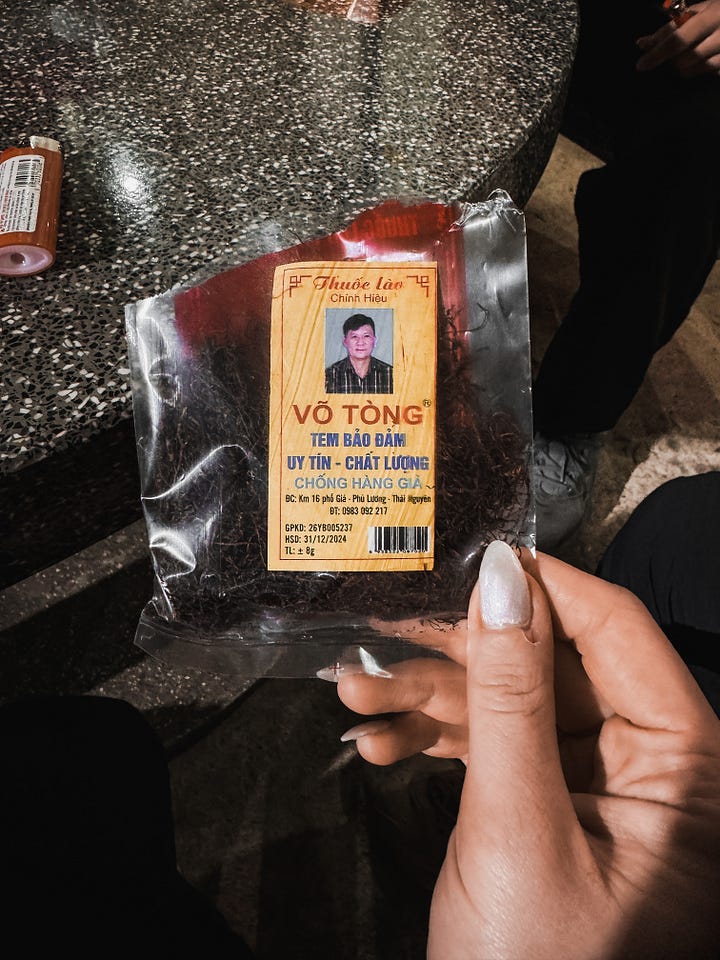
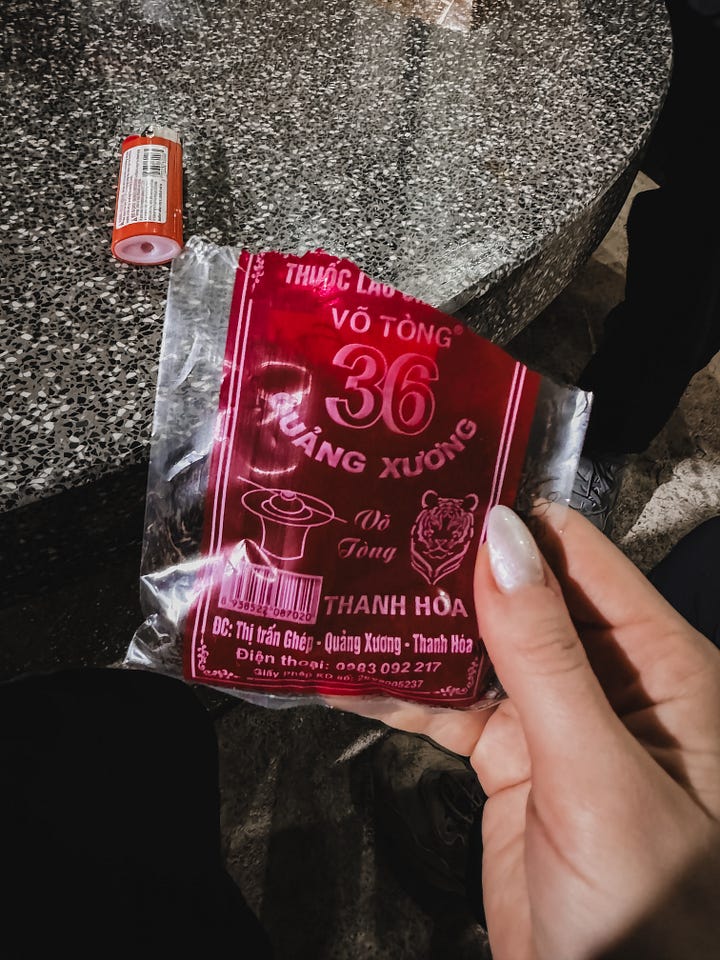
In the haze of the smoke and the deliriousness of the cold night, we laughed, chatted, and bonded. Though the language barrier was present, we were still able to get by with jokes and simple words. In that moment, the smoke connected us, not just to Prince and Binh, but to a potentially lesser-known part of Vietnamese history and culture, a part that we got to experience hands-on.
Another day, another night market.
C and I are making our way between stalls on a rainy, misty night in Hanoi. In between tables full of chopsticks, pins, and counterfeit Chanel bags, we spot the table full of beautiful, hand-carved tobacco pipes, some with dragon-shaped stone holders, ranging in price from 300,000 VND all the way up to over a million. Seems high, but the exchange prices these beauties from $16 CAD to around $65. Feels like a low price to pay for such a work of art, but we’ve seen a few at a higher price point.
In addition to the pipes, the seller also had bags of the tobacco for sale.
“Want to buy one of these?” I asked C, half-joking and half-serious.
She looked at me with horror.
“No way!”
The thuốc lào had been a fun experience, but it burned our lungs too much, and, as much as it would make a cool souvenir, it wasn’t as if we’d be smoking it at home anyway.
“Maybe some of your friends could put it in their joints,” I offered.
“Nobody’s putting that in their joints,” C scoffed. “Not on my watch.”
The thuốc lào was strong, and our lungs had bore the brunt of it for two days after inhalation. We watched the rickshaw drivers inhale the tobacco and stay standing, no phe, no seeming dizziness. How? We wondered. They must have just gotten used to it at this point, the warm sensation, the throat-scratching.
We admired the pipes a bit longer and kept walking, our eyes now distracted by a pair of bootleg “Lois Vooton” shoes.
Sofie Mikhaylova is a psychedelics, pop culture, and travel writer, among other things. Her writing has appeared in Vice, leafie, Psychedelic Spotlight, The Washington Post, Fodor's Travel, Double Dot Magazine, and more. Find her on Instagram, her newsletter Sofieland, her podcast Sofieland, and her website.

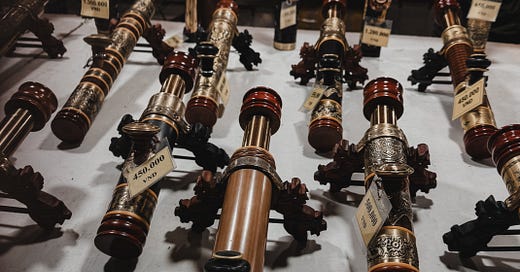


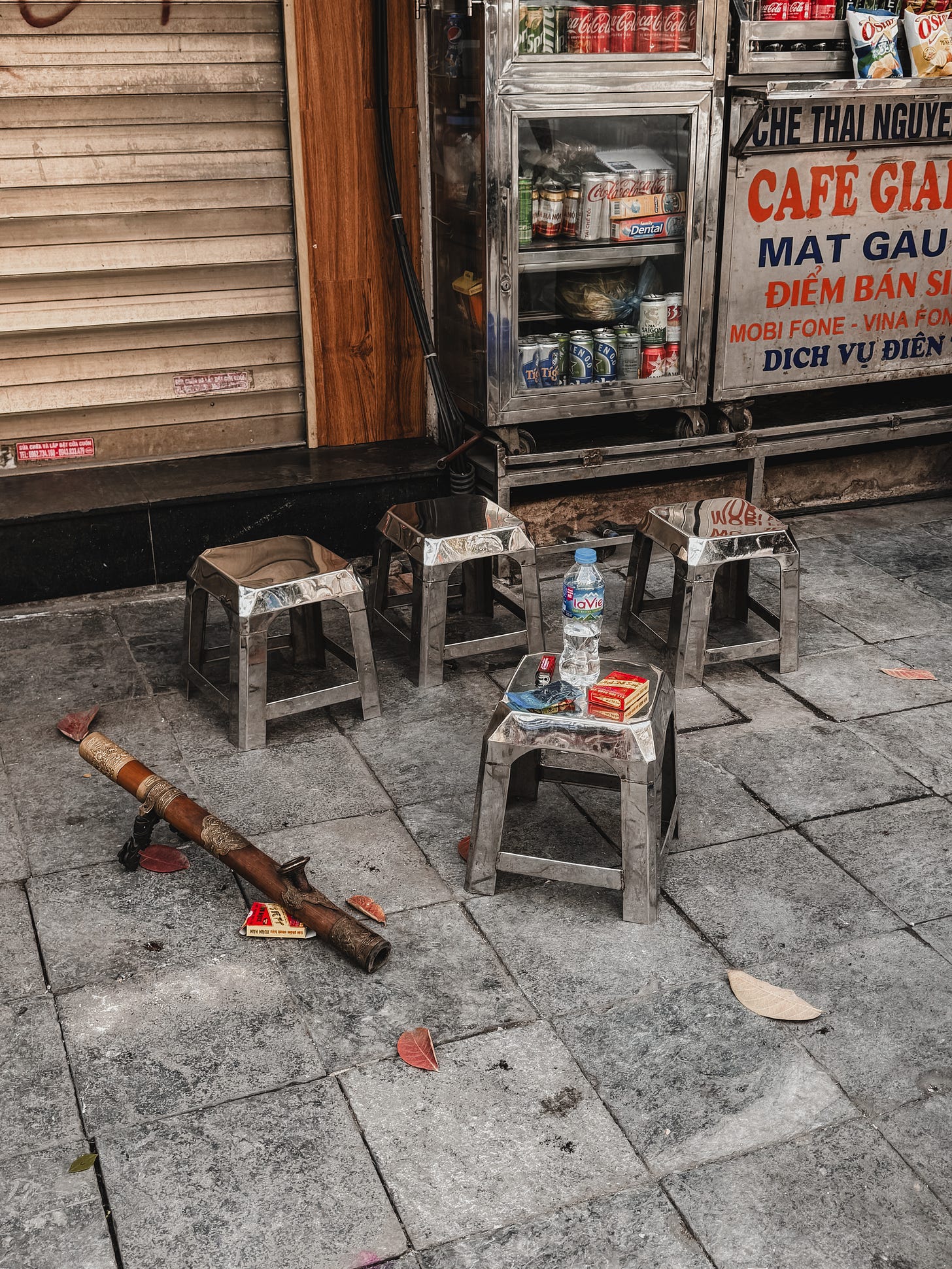
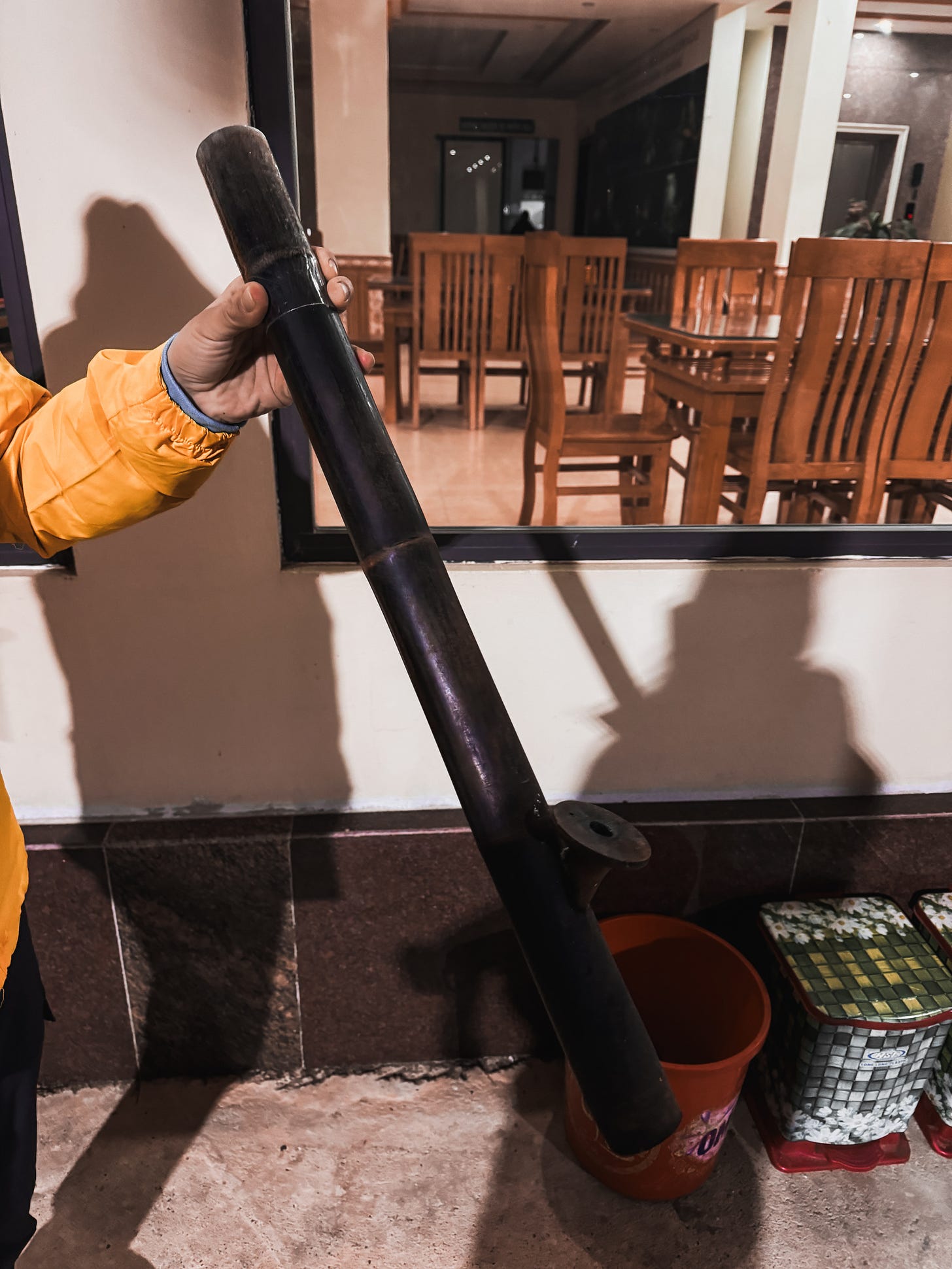

From Laos? The post is talking about Vietnam:)